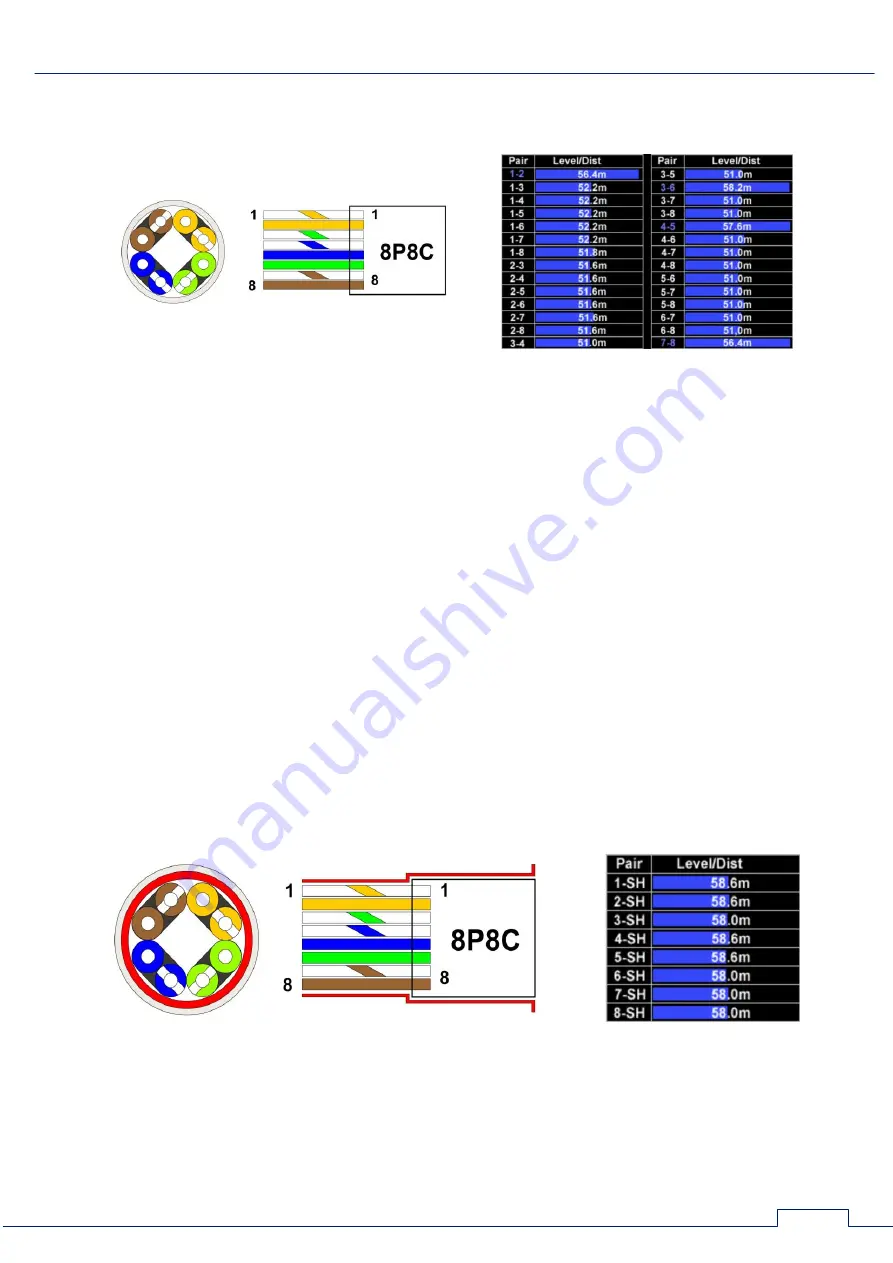
BASIC OPERATIONS
69
The cable consisting of four twisted pair
Features of structure
1. Distances to heterogeneities with maximum response levels are different. This is due, firstly, to
the different speed of signal propagation in "linked" and "non-linked" pairs, and secondly, with
different lengths of wires (different twist pitch). In "linked" pairs, the propagation speed is lower
(there is a longer delay in the arrival of the response), therefore, the measured distance is
greater. The difference in the measured distances of the "linked" pairs is determined by the
different twist pitch. In the "non-linked" pairs, the propagation speed is higher. The measured
distance is less.
2. The response levels for "linked" and "non-linked" pairs are different. The maximum levels are
fixed on the connected pairs of wires 1-2; 3-6; 4-5; 7-8 (capacitive coupling in these pairs is
maximum). In "non-linked" pairs, capacitive coupling is weaker, which leads to lower response
levels (usually half the levels in "linked" pairs). Moreover, the response levels in "non-linked"pairs
are approximately equal to each other.
3. If pairs formed by the shield and one of the wires were involved in testing, in the absence of
defects the response levels in these pairs should be equal to each other. The distances to
heterogeneity (or to the end of the cable) exceed the distances measured on the "linked" pairs
and are also equal to each other.






























